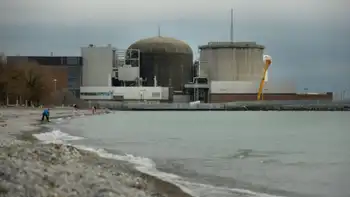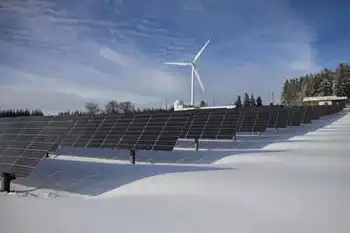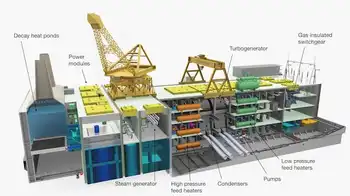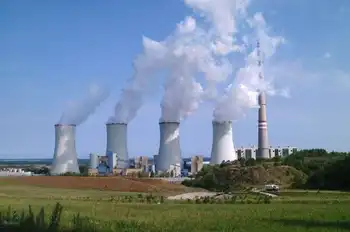Unlocking the promise of nuclear energy
- Even with modest signs of economic recovery, many Americans in 2010 are focused on the here and now: making a living and surviving the worst recession in decades.
But most also want a better future, including a secure, clean energy future — one that helps our country improve the environment while maintaining its competitive edge. And despite the other pressing issues at hand, we must take definitive steps in planning for that future today.
As we look to address serious and broad issues — global climate change, the need for increased energy independence and our desire to stimulate the economy to promote lasting security and meaningful job growth — our country is at an energy crossroads. Meanwhile, other countries are building modern energy systems that produce good jobs today and a platform for economic growth in the future.
If the U.S. is to maintain its competitive position in the world, our elected officials and policymakers must move past political rhetoric to provide a clear federal energy policy.
And if we do it right — by creating a comprehensive energy policy that includes the laws, regulations, options and incentives to promote investment — we can address these major issues and set the stage for a new age of energy security and prosperity.
Nuclear power has been part of the energy mix in our country for more than 50 years, and it currently accounts for 20 of the electricity generated here — and 70 of the country's carbon-free generation. But while many new plants are being built in Europe and Asia 56 reactors under construction in 15 countries worldwide, there have been no new nuclear plants started in the United States in three decades.
Until recently, support for new nuclear power plants by most U.S. policymakers has been tepid, at best, even though most Americans — 74, according to a national poll in 2009 — support new nuclear generation.
Today, half of our electricity in the U.S. comes from coal-fired power plants. So as we look to reduce our "carbon footprint," it is important to recognize that the highest carbon-emitting resource is responsible for 50 of our power generation. Addressing it will not be easy or inexpensive.
While we don't have final clarity on the rules for reducing carbon emissions, it's clear that we're headed into a carbon-constrained future. Thus, we and many other utilities are taking steps now to begin the evolution to a lower-carbon energy mix, by converting some coal-fired plants to cleaner-burning natural gas plants.
But that won't be enough. Natural gas still emits about half the carbon dioxide of coal. So even if we shut down all of the nation's coal-fired power plants and replaced them with gas-fueled plants, we would still fall short of the CO2 targets in pending federal legislation 80+ below 2005 levels. To reach that reduction target, we must replace fossil-fueled generation with carbon-free resources. And today, the only technology capable of producing carbon-free electricity on a utility scale, 24 hours a day, is nuclear energy.
The Electric Power Research Institute has forecast the need for 45 new U.S. nuclear reactors by 2030, in addition to the deployment of a full range of renewable energy technologies. Other estimates cite worldwide needs for as many as 734 new reactors by 2050.
A number of U.S. utilities, including Progress Energy, have announced plans to pursue new nuclear reactors. The degree to which these plants and many others are built depends largely on how we, as a country, address issues of cost and onerous regulatory hurdles through a definitive national policy.
The issues are not insurmountable. Other countries have resolved many of the questions and concerns we're struggling with. France generates more than 75 of its electricity using nuclear power. China has 20 new reactors under construction and proposals for another 150 in the coming decades.
Each new plant creates thousands of construction jobs and permanent positions. Their positive effect on local economies is dramatic. But today, almost all this economic progress is being realized abroad.
China has made nuclear energy a cornerstone of its energy and economic strategy. The Chinese have streamlined the licensing process to assure adherence to consistent safety standards while providing for plants to be built in about half the time the process is expected to take here.
In addition, China's commitment to developing domestic design and manufacturing capability has lowered costs considerably, created a positive environment for nuclear technology and job growth, and positioned China to be a global leader in implementing the next generation of nuclear plants.
We, too, could assume that global leadership position — if we have the political and national will to do so. Imagine the impact such a policy change could have on shuttered U.S. factories.
A comprehensive national energy policy must address the high cost and financial risk that stem from the extended construction period for nuclear plants. The financial burden of implementing public policy must be shared.
Among the options that should be considered are low- or zero-interest loans during construction, construction tax credits or federal subsidies similar to those provided for other green energy sources e.g., 30 federal subsidy for wind energy.
By leveraging the strength of the federal government to lower the cost of borrowing billions of dollars during construction, we can build the nuclear plants our country needs with much lower financial impact on consumers during construction.
If we're serious about reducing carbon emissions, creating jobs and economic investment and increasing our energy independence, our nation must recognize the vital role of advanced nuclear energy, and move quickly to put in place the policies and programs that will help us unlock its dramatic and far-reaching potential.
Related News

Sudbury Hydro crews aim to reconnect service after storm
SUDBURY - About 300 Sudbury Hydro customers are still without power Thursday after Monday's powerful microburst storm.
The utility's spokesperson, Wendy Watson, says the power in the affected New Sudbury neighbourhoods should be back on by the weekend.
The storm, which Environment Canada said was classified as a microburst or straight line wind damage, downed a number of power lines in the city.
Now crews are struggling with access to the lines as they work to reconnect service in the area.
"In some cases, you can't get to someone's back yard, or you have to go through the neighbour's yard," Watson said.
"We have one…




